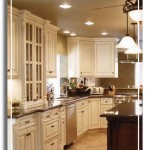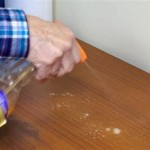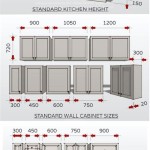Unveiling the Secrets of Repainting Kitchen Cabinets: The Ultimate Guide to Selecting the Best Paint
When embarking on the transformative journey of repainting kitchen cabinets, selecting the optimal paint becomes a crucial decision that will ultimately determine the success of your endeavor. With a myriad of paint types and finishes at your disposal, understanding the essential aspects of the best paint for kitchen cabinets is paramount.
1. Oil-Based vs. Water-Based Paint
Oil-based and water-based paints exhibit distinct characteristics that cater to specific requirements. Oil-based paints boast superior durability, making them ideal for high-traffic areas prone to wear and tear. However, they require extensive ventilation due to their strong fumes and take longer to dry. Conversely, water-based paints offer ease of application, faster drying times, and minimal odor, making them a suitable choice for those seeking a more eco-friendly option.
2. Enamel vs. Latex Paint
Enamel and latex paints serve different purposes in the realm of cabinet repainting. Enamel paints provide a tough, glossy finish that is both scratch- and stain-resistant, making them ideal for areas exposed to grease and moisture. Latex paints, on the other hand, offer a softer, satin finish that is more prone to wear but is easier to apply and touch up.
3. Color and Finish Selection
The color and finish of your paint play a significant role in transforming the aesthetics of your kitchen. Consider the existing décor and the desired ambiance when selecting your hue. Neutral shades like white, gray, or beige provide a classic and timeless look, while bolder colors can infuse your kitchen with a touch of personality. As for the finish, choose between high-gloss for a dramatic sheen or matte for a more subdued elegance.
4. Sheen Levels
The sheen level of your paint influences its durability, cleanability, and overall appearance. High-gloss finishes offer the highest resistance to stains and scratches but can accentuate imperfections. Satin finishes provide a more balanced combination of durability and ease of cleaning. Eggshell finishes, with their subtle sheen, are suitable for low-traffic areas or vintage-style kitchens.
5. Coverage and Drying Time
Adequately covering your cabinets with the appropriate number of coats is essential for achieving a flawless finish. Pay attention to the coverage rate of the paint you select and ensure you have sufficient quantities to complete the job. Drying time is another important factor as it determines when you can start using your cabinets after repainting. Opt for fast-drying paints to minimize disruption to your kitchen's functionality.
6. Environmental Considerations
When selecting your paint, consider its environmental impact. Look for low-VOC (volatile organic compound) or zero-VOC paints that release fewer harmful fumes during application and drying. Choose paints that are certified by organizations such as GreenGuard or Zero VOC Emissions Standards.
By carefully considering these essential aspects, you can equip yourself with the knowledge necessary to select the best paint for repainting your kitchen cabinets. Transform your kitchen space into a haven of beauty and functionality with a fresh coat of paint that is tailor-made to meet your unique needs.

What Is The Best Paint For Kitchen Cabinets Heritage Custom Painting

Best Paint For Kitchen Cabinets 24 Brands Blind Tested 2024

How To Paint Kitchen Cabinets In 7 Simple Steps

How To Paint Kitchen Cabinets In 7 Simple Steps

Best Paint For Kitchen Cabinets 24 Brands Blind Tested 2024

How To Prep And Paint Kitchen Cabinets Lowe S

Avoid These Mistakes How To Paint Cabinets That Are Already Painted Grace In My Space

What Is The Best Paint To Use On Kitchen Cabinets

How To Paint Kitchen Cabinets A Step By Guide Confessions Of Serial Do It Yourselfer

Best Paint Color For Kitchen Cabinets
Related Posts








